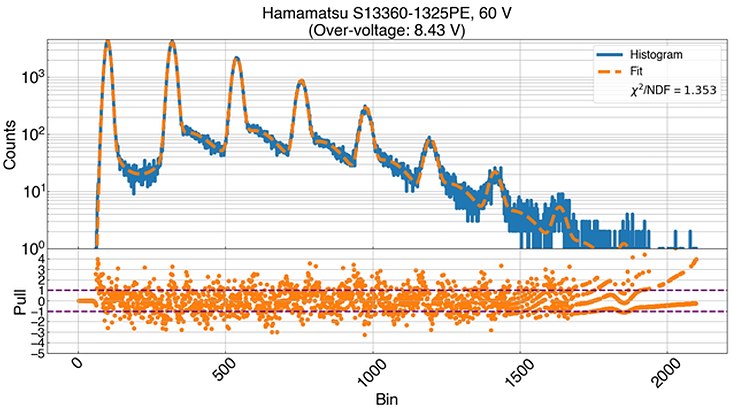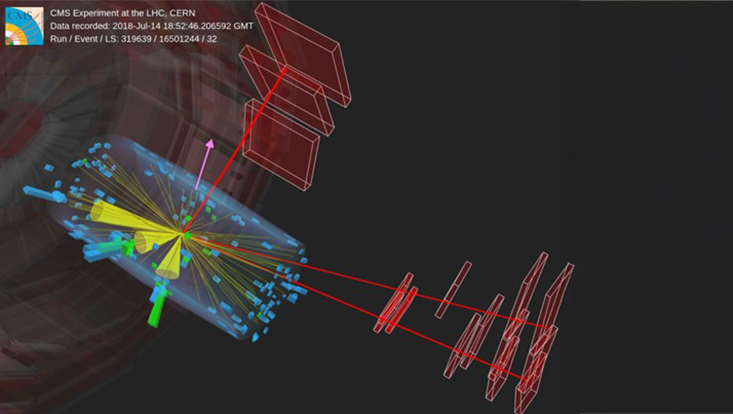PeakOTron: A Python Module for Fitting Charge Spectra of Silicon Photomultipliers
30 November 2023

Photo: J Schwandt/UHH
PeakOTron is a software program developed by a team of scientists of the Quantum Universe cluster of excellence. PeakOTron characterizes the light measurements of Silicon Photomultipliers with a newly developed detector response model. With this program, scientists will be able to analyze spectra from Silicon Photomultipliers that are illuminated by pulsed light. Different to other programs, entire spectra, including the regions in-between the photoelectron peaks, are fitted. Several parameters can be determined such as the single photon amplification factor, the mean number of incident photons, and both primary and correlated noise characteristics. The program has performed well on both simulated and measured spectra and is suitable for analyzing a single spectrum or performing batch analysis.
Silicon Photomultipliers (SiPMs) are sensors that can detect single photons in the visible range. Thanks to their high photon-detection efficiency (between 30-60%) and the capacity to detect visible light, they have many applications in industries and science, including astrophysics, high-energy physics and nuclear medical imaging.
PeakOTron is an open-source software tool developed by the Quantum Universe scientists working in the Detector Development Group of the University of Hamburg to automatically and en masse characterize SiPM devices. By analyzing the distribution of charges measured from a SiPM under light illumination, it can accurately determine important parameters that are used to classify SiPMs, such as the single-photon amplification factor and the mean number of photons incident on the device.
PeakOTron can also measure the contributions of detector noise, a property that can vary depending on the device's operating conditions such as voltage or temperature, and the amount of radiation it has been exposed to.
The analysis of PeakOTron has shown sub-percent level single-photon amplification factor resolution, the ability to measure the rate of thermally-induced discharges from the device, which usually requires a separate measurement, and the response of two different SiPMs from different manufacturers with excellent agreement.
PeakOTron has a wide range of applications in various fields. For instance, it can be used for the calibration of a new calorimeter for the Large Hadron Collider’s Compact Muon Solenoid (CMS) experiment - the high-granular endcap calorimeter (HGCAL). It is a crucial upgrade of CMS that is needed to achieve excellent performance during the operation of the High-Luminosity Large Hadron Collider. The HGCAL will have around six million individual SiPM sensors, each of which must be characterized separately to achieve optimal performance. This tool can be used for this purpose, enabling physicists to study the performance of the devices under different conditions, account for temperature changes, and identify noisy or dead channels.
PeakOTron is free to download from the following link:
Rolph, J., Garutti, E., Klanner, R., Quadfasel, T., & Schwandt, J. (2023),
PeakOTron. Zenodo. https://doi.org/10.5281/zenodo.10014537


